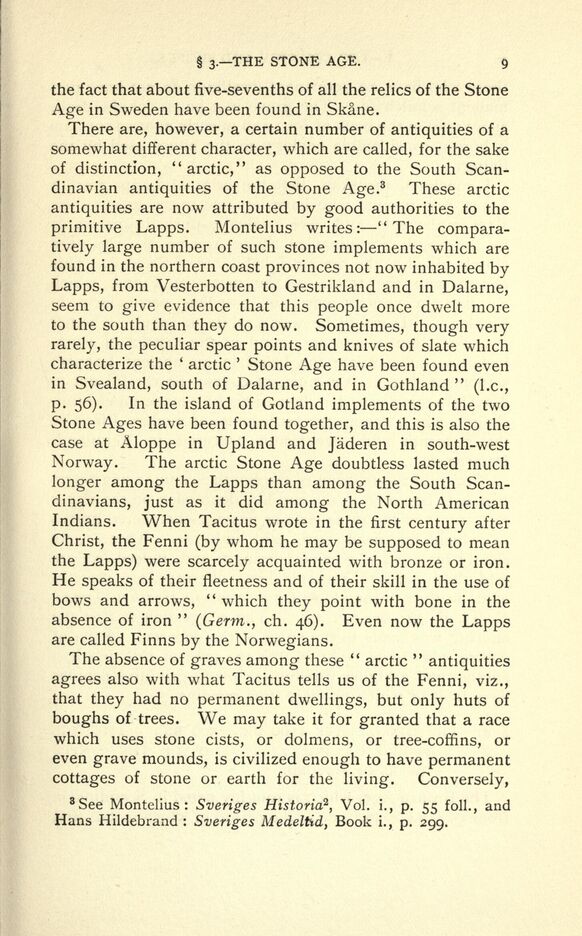
Full resolution (JPEG) - On this page / på denna sida - I. Introductory Lecture.—The Country and its Inhabitants in the Heathen Period up to 1000 A.D. - § 3. The Inhabitants—The Stone Age

<< prev. page << föreg. sida << >> nästa sida >> next page >>
Below is the raw OCR text
from the above scanned image.
Do you see an error? Proofread the page now!
Här nedan syns maskintolkade texten från faksimilbilden ovan.
Ser du något fel? Korrekturläs sidan nu!
This page has never been proofread. / Denna sida har aldrig korrekturlästs.
3- THE STONE AGE. 9
the fact that about five-sevenths of all the relics of the Stone
Age in Sweden have been found in Skane.
There are, however, a certain number of antiquities of a
somewhat different character, which are called, for the sake
of distinction,
"
arctic," as opposed to the South Scan
dinavian antiquities of the Stone Age.
3
These arctic
antiquities are now attributed by good authorities to the
primitive Lapps. Montelius writes: "The compara
tively large number of such stone implements which are
found in the northern coast provinces not now inhabited by
Lapps, from Vesterbotten to Gestrikland and in Dalarne,
seem to give evidence that this people once dwelt more
to the south than they do now. Sometimes, though very
rarely, the peculiar spear points and knives of slate which
characterize the arctic Stone Age have been found even
in Svealand, south of Dalarne, and in Gothland" (I.e.,
p. 56). In the island of Gotland implements of the two
Stone Ages have been found together, and this is also the
case at Aloppe in Upland and Jaderen in south-west
Norway. The arctic Stone Age doubtless lasted much
longer among the Lapps than among the South Scan
dinavians, just as it did among the North American
Indians. When Tacitus wrote in the first century after
Christ, the Fenni (by whom he may be supposed to mean
the Lapps) were scarcely acquainted with bronze or iron.
He speaks of their fleetness and of their skill in the use of
bows and arrows,
"
which they point with bone in the
absence of iron
"
(Germ., ch. 46). Even now the Lapps
are called Finns by the Norwegians.
The absence of graves among these
"
arctic
"
antiquities
agrees also with what Tacitus tells us of the Fenni, viz.,
that they had no permanent dwellings, but only huts of
boughs of trees. We may take it for granted that a race
which uses stone cists, or dolmens, or tree-coffins, or
even grave mounds, is civilized enough to have permanent
cottages of stone or earth for the living. Conversely,
3
See Montelius: Sveriges Historia2
,
Vol. i., p. 55 foil., and
Hans Hildebrand :
Sveriges Medeltid, Book i., p. 299.
<< prev. page << föreg. sida << >> nästa sida >> next page >>